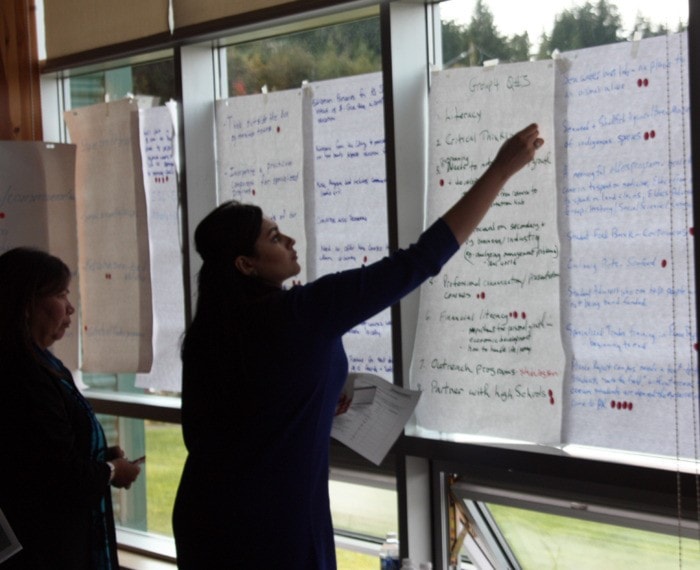The Northwest Community College held a public input session last Thursday to gather feedback, ideas and concerns on how the school can change in order to meet the needs of the communities that it serves.
“We are a community college. . . and we're having the community, business and industries in the northwest region tell us what their needs are for the next five years. It just makes sense,” says Denise Henning, the president of the college who attended the Prince Rupert input session.
About 50 or so people came to the multipurpose room at the college for a brainstorming session that lasted most of the day. The goal was to come up with a short list of the most popular ideas from the public which will be taken to staff and the school's steering committee to see if they can be made into practical goals with plans on how the college can implement them over the next five years.
To get these ideas, the people who participated were split up into a couple small groups with one NWCC faculty member there to be help the group along and to write down ideas as participants came up with them. People were asked to come up with what NWCC does, what it does well, and what the feel the community needs from a post-secondary institution.
All of the ideas were written out onto large sheets of paper, then organizers put the ideas up on the wall and had the group point out which ideas had been suggested more than once. Popular ideas were then written onto new lists and participants were given 15 stickers to put next to the ideas they liked the most. The scores were tallied and the least popular ideas were dropped. This was repeated with a smaller number of stickers and the list was parred down again to the top nine ideas. With the most popular ideas revealed, people were given five stickers one more time to find the order of preference.
When all was said and done, these were the favourite ideas coming out of the brainstorming session:
The highest rated idea was to have the college offer specialized trades training that could be started and finished inside Prince Rupert.
The next highest was that the college should begin rotating courses that are in high demand such culinary arts or licensed nurse practitioner training.
Three different ideas tied for third. One was to have more collaboration with First Nations communities. Another was to offer a course where students could learn practical life and career skills such as how to network, personal and social development skills, basic parenting skills and to help students broaden their horizons. The last idea was to create a marine sciences school similar to the Bamfield Marine Sciences Centre on Vancouver Island; making Prince Rupert the “Bamfield of the North.”
The fourth highest rated idea is that the business community and the college should work together to network with other agencies on potential projects for students.
In fifth was that the college should do more partnering with the high schools for projects like cross-credit courses for high school students.
Tied for sixth was the last two ideas. To create a course on shellfish aquaculture, mariculture of indigenous species and seaweeds. The other was to offer courses in practical financial literacy and money managing.
Prince Rupert is just one of 17 communities from across northern BC randomly selected by the college for gathering public input. After all the meeting are over, all the suggestions will be taken to staff to see how they might be implemented. These options will be taken to the college steering committee and after that they will be sent to the board of directors for final approval. The whole process is expected to last until December when the college will publish a report on what changes it plans to make.
